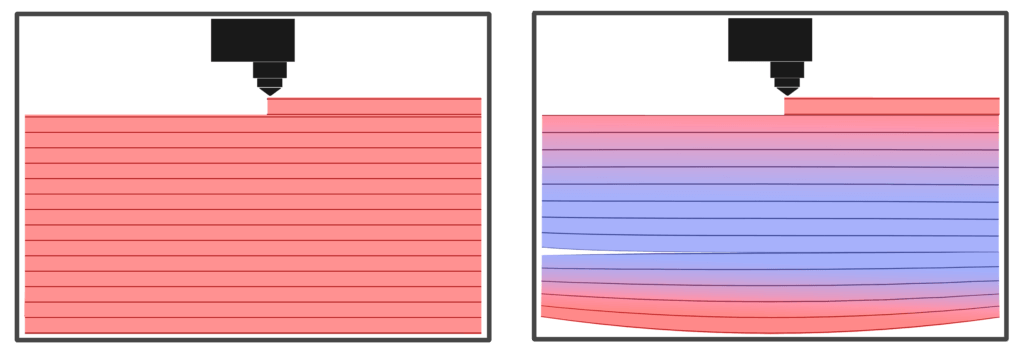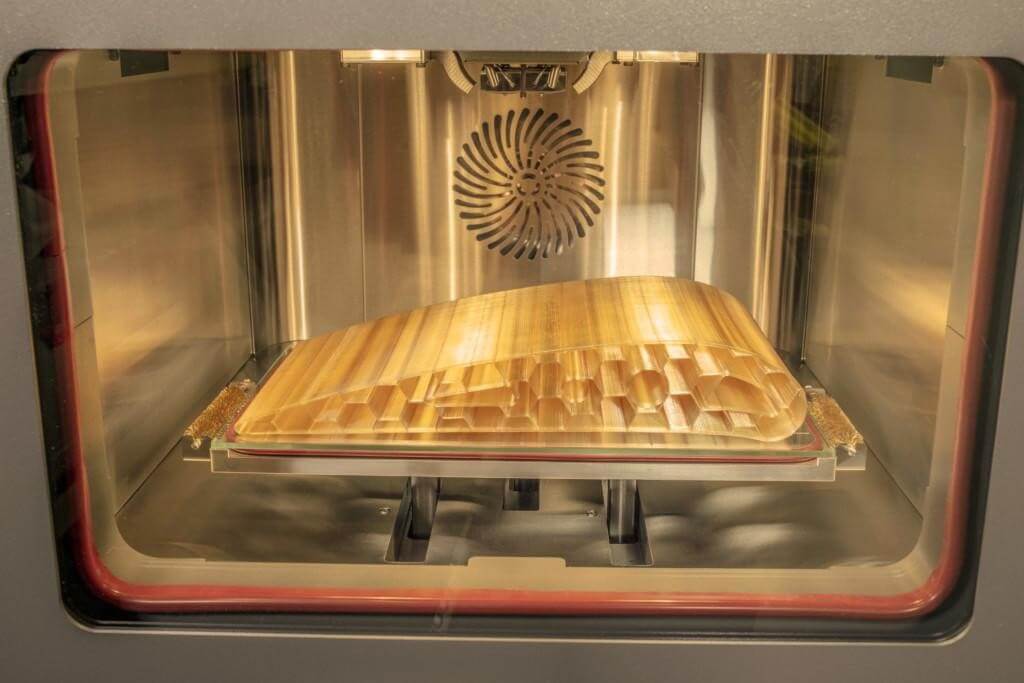Menu
close
The heated chamber is important in 3D printing to be able to print larger and more complex parts.
The environment in the heated chamber needs to be perfect for the material being printed. Commodity polymers like PLA can be printed without a heated chamber. To print with engineering polymers like ASA or PC a heated chamber up to 140°C is required to be able to deliver the best possible quality of the printed parts. However, high-performance polymers like ULTEM or PEEK have extremely high heat resistance, meaning you need to have a heated chamber able to get up to 250°C, to have the control needed for the printing process. Without the optimal temperature in the chamber, effects like warping, residual internal stress and poor mechanical properties will most likely ruin the 3D printed parts.
Printing high-performance polymers without the optimal device will waste material, your time and money. The advanced heated chamber in the miniFactory Ultra solves problems like warping as well as other structural issues in the printed parts. The main function of the heated chamber is to keep the part at an equal and stable temperature during the entire printing process. When the print is finished, the temperature in the chamber will slowly cool down. This is to ensure high mechanical properties and dimensional accuracy for the printed part. Slow and equal cool down also prevents that no internal stress is formed.

The heated chamber in the miniFactory Ultra heats up extremely fast. Preparation time to have stabilized 220°C chamber takes only 30min. The smart structure of the heated chamber not only maintains stable temperature during the process. It also ensures a long lifecycle for all of the critical components. Thanks to the floating structure there is no risk of overheating the components in the machine. The floating structure ensures that all of them are safe from the high temperatures.
The heated chamber is the most important feature when looking for the best possible results in your printed parts. Every polymer has a glass transition temperature (Tg). When working with amorphous materials like PPSU or PEKK-A, it is important to keep the environment surrounding the material at optimal temperature. In many cases, the optimal temperature for the heated chamber is close to the Tg of the polymer being printed.
In Tg the polymers are in structural relaxation. Thanks to the steady cool down, you will also avoid otherwise invisible issues, like internal stress inside the printed part. Thanks to that high temperature we can also offer the widest range of materials on the market for our customers. We are offering ready optimized profiles for different materials to make the printing process as easy as possible. When printing with our system, you just have to choose the material you need for your print.
The optimal chamber temperatures for some high-performance polymers are:

You can expect to have same high printing quality with multiple different materials. With the Ultra, printing high-performance polymers is like printing PLA with any desktop 3D printer. You can be sure to have parts that are dimensionally accurate, mechanically strong and free of hidden internal stress. Even when injection moulding high-performance polymers, the mould must be equally heated to avoid the part cooling down too fast, and creating residual stress in the part. With our solution we are aiming to make the principles of injection moulding possible through 3D printing, to ensure maximum mechanical properties of the printed parts.
"*" indicates required fields